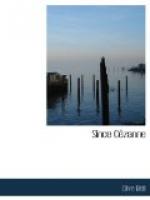And so we get a school of lenient criticism which takes account of an appeal to life, provided that appeal be to universal experience and be made by purely aesthetic means. According to this theory we can be moved aesthetically by references to universal experience implicit in certain arrangements of line and colour, always provided that such references are expressions of the artist’s peculiar emotion, and not mere comments on life and history or statements of fact or opinion. These by everyone are deemed unessential. No one seriously pretends that in a picture by a Primitive of some obscure incident in the life of a minor saint there is anything of true aesthetic import which, escaping the subtlest and most sensitive artist, is revealed to the expert hagiographer: neither does anyone still believe that to appreciate Sung painting one must make oneself familiar with the later developments of Buddhist metaphysics as modified by Taoist mysticism.
Such is the prevailing critical theory. What of critical practice? It seems to me that even our best come something short of their professions; and when I confess that I am going to pick a quarrel with such fine exponents of their craft as the critics of The Times and the Nation readers will guess that for once I mean to take my confreres seriously. Lately we have seen a hot dispute in which, unless I mistake, both these gentlemen took a hand, raging round a figure of Christ by Mr. Epstein. For me the only interesting fact that emerged from this controversy was that, apparently, most of the disputants had not so much as heard of the greatest living sculptor—I mean Maillol, of course. Certainly, with the art of Maillol clearly in his mind, it is inconceivable that one so discriminating as the critic of the Nation should have said, as I think he did say, that Mr. Epstein now stands for European sculpture as Rodin stood before him. Not only is Maillol quite obviously superior to Mr. Epstein; in the opinion of many he is a better artist than Rodin.




